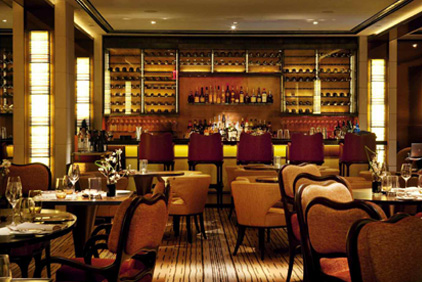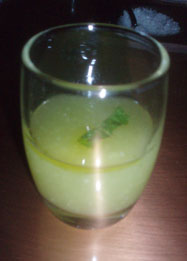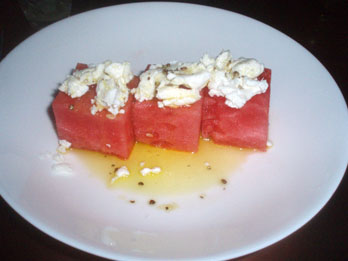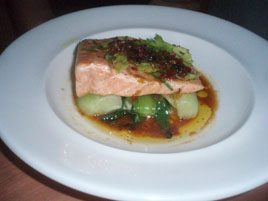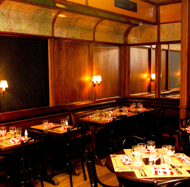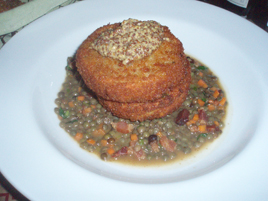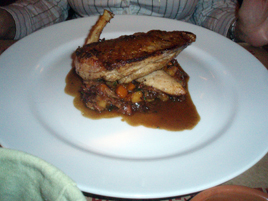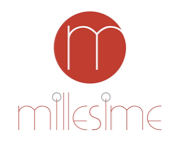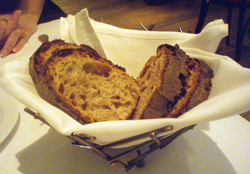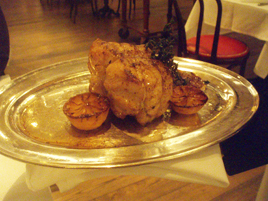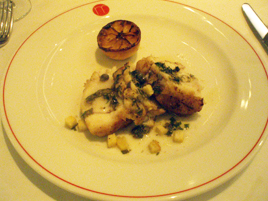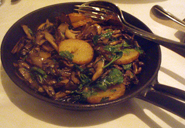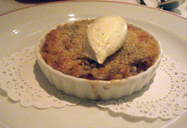
The word chef derives from a Latin word meaning chief, or head. It is, in other words, a managerial job, even though most of us think of chefs as “people who cook.” That, of course, is Daniel Boulud’s public persona. But running an empire of thirteen restaurants in six cities on three continents is more a test of management than of cooking, and in New York no one has a better success rate then Boulud.
With the opening of Boulud Sud (a Mediterranean-themed fine dining restaurant) and Épicerie Boulud (a sandwich and take-out place) across the street from Lincoln Center, Boulud is now up to eight Manhattan establishments. I believe he is the only restaurateur in town with six or more, who has never closed one. (His record out of town is more mixed: two Vancouver restaurants closed this year; a Las Vegas restaurant closed in 2010.)
Boulud’s Manhattan restaurants are all hits. If he ever has a slow night anywhere, I’ve never seen it. What is more remarkable, all of his restaurants remain recognizably French—a cuisine that is hardly fashionable in this town, to say the least.
Boulud’s closest analogue in New York, Jean-Georges Vongerichten, opens a steakhouse here, a Thai restaurant there, a Japanese one somewhere else, and so forth. Indeed, Vongerichten’s website promises, “A cuisine to suit every taste.” That’s not Boulud. Although his places span a wide range of formality, or the lack thereof, he doesn’t try to be something he’s not. That may be the key to his enduring success.
Boulud’s restaurants are critical hits, as well. Of the five that received “starred” reviews in The New York Times, all have the rating that I believe Boulud intends them to have (four at Daniel, three at Café Boulud, two at DB Bistro Moderne, Bar Boulud, and DBGB).
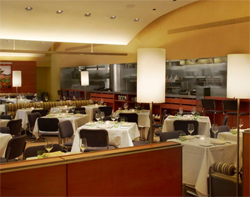 Boulud Sud and Épicerie Boulud build on the chef’s already successful Lincoln Center beachhead, where Bar Boulud has remained perpetually packed since it opened in 2008. As I noted at the time, there are at least 10,000 seats at the performing arts center, they are in use most nights of the year, and most of those people want to eat. It seemed remarkable that so few good restaurants were in the immediate vicinity.
Boulud Sud and Épicerie Boulud build on the chef’s already successful Lincoln Center beachhead, where Bar Boulud has remained perpetually packed since it opened in 2008. As I noted at the time, there are at least 10,000 seats at the performing arts center, they are in use most nights of the year, and most of those people want to eat. It seemed remarkable that so few good restaurants were in the immediate vicinity.
Since Bar Boulud came along, prospects for dining at Lincoln Center have improved considerably, with Lincoln opening in a new space, and Ed’s Chowder House, and Atlantic Grill replacing formerly dreary alternatives. But Boulud is clearly betting that the neighborhood is not yet saturated, and judging by the crowds at these restaurants, he is probably right.
Boulud Sud is the most outwardly formal dining room that Boulud has opened in quite some time. Predictably, an Eater.com commenter called it “dated and stuffy”: the younger diners that restaurateurs covet are conditioned to break out into hives when they see a white tablecloth. Good for Boulud for bucking that trend. This is a comfortable, adult restaurant, lying at about the midpoint of between the bustling Bar Boulud around the corner and the quiet Café Boulud on the Upper East Side.
Servers and runners wear crisp white shirts and black vests. Boulud, leaving nothing to chance, brought in a brigade (many of them from his other restaurants) that practically outnumbers the guests. My immediate reaction, after falling in love with the room (nicer than the photo suggests), was to think: we are going to get taken care of here.
 The Mediterranean theme gives Boulud license to wander from the south of France, to Italy and Morocco. You can easily dine here for under $40 per head, before alcohol. That probably won’t last, but for now Boulud Sud might be the best fine dining deal in town.
The Mediterranean theme gives Boulud license to wander from the south of France, to Italy and Morocco. You can easily dine here for under $40 per head, before alcohol. That probably won’t last, but for now Boulud Sud might be the best fine dining deal in town.
The menu, with its multiple categories, reminds me a bit of Café Boulud: “De La Mer” (fish and seafood), “Du Jardin” (vegetables), “De La Ferme” (meat and poultry). Within these categories, there’s a further subdivision into “small plates,” appetizers and entrées. Mains average around $25, and very few are over $30. The small plates and apps (the distinction being somewhat arbitrary) average around $12.


From the “small plates” section, a Tartine ($13; above left) offered four delicate canapés of crabmeat, sea urchin, and olives. Treviso Salad ($12; above right) was a simple, but effective combination of castelmagno cheese, speck ham, and aged balsamic.


Lamb Cleopatra ($23; above left) is lamb shoulder, slowly braised, and served with almonds and apricots: a hearty, satisfying dish. Daurade ($27; above right) is crisped on the plancha, served with vegetables on a Romesco sauce.
All of these dishes are slightly on the conservative side, as you would expect in a Boulud restaurant, but they were beautifully done, especially at the price. The Daurade, for instance, would easily be a $30+ entrée in many restaurants, without being any better.
It’s difficult to predict the trajectory of a restaurant on its third night of service, when the chef/owner has his A team on the floor, everyone is on best behavior, and the reservation book is being held down to 70 or 80 percent full. Boulud Sud will, if nothing else, be more expensive later on. If it becomes as busy as Bar Boulud, it might be a shade less charming.
But for now, Daniel Boulud has another hit on his hands.
Boulud Sud (20 W. 64th St. btwn Broadway & Central Park West, Upper West Side)
Food: **
Service: **
Ambiance: **
Overall: **
 Sunday, October 16, 2011 at 05:09PM
Sunday, October 16, 2011 at 05:09PM 



